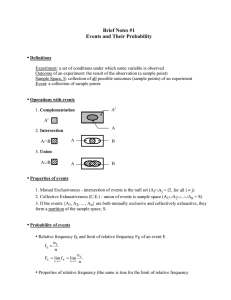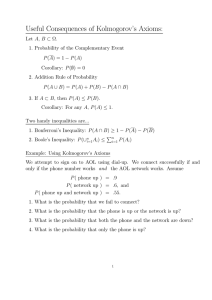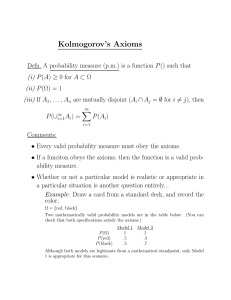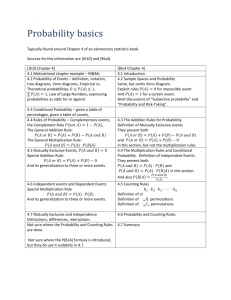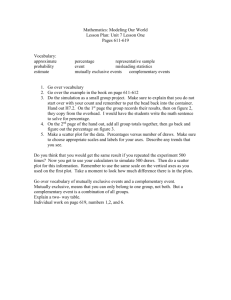Definitions of Probability
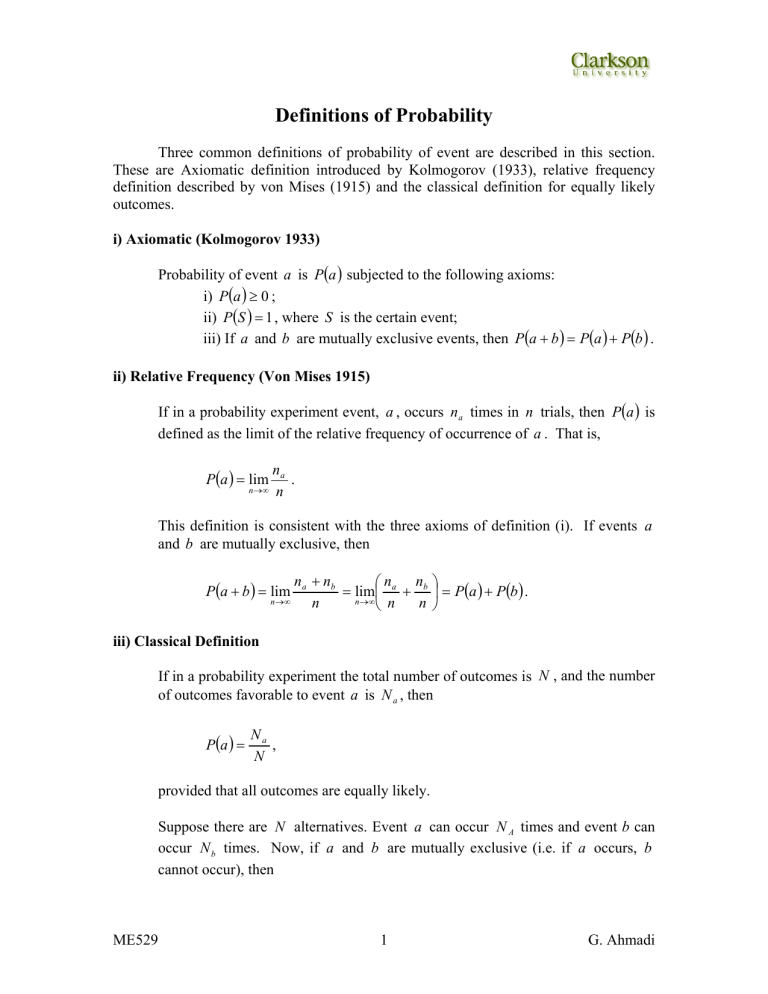
Definitions of Probability
Three common definitions of probability of event are described in this section.
These are Axiomatic definition introduced by Kolmogorov (1933), relative frequency definition described by von Mises (1915) and the classical definition for equally likely outcomes. i) Axiomatic (Kolmogorov 1933)
Probability of event a is i) ii)
P
P
( )
( )
≥
=
0
1
;
P
( )
subjected to the following axioms:
, where S is the certain event; iii) If a and b are mutually exclusive events, then P
( a
+ b
)
=
P
( ) ( )
. ii) Relative Frequency (Von Mises 1915)
If in a probability experiment event, a , occurs n times in n trials, then a
P
( )
is defined as the limit of the relative frequency of occurrence of a . That is,
P
= lim n
→ ∞ n a n
.
This definition is consistent with the three axioms of definition (i). If events a and b are mutually exclusive, then
P
( a
+ b
)
= n lim
→ ∞ n a
+ n b n
= n lim
→ ∞
⎛
⎜
⎝ n a n
+ n b n
⎞
⎠
=
P
( ) ( )
. iii) Classical Definition
If in a probability experiment the total number of outcomes is N , and the number of outcomes favorable to event a is N a
, then
P
=
N a
N
, provided that all outcomes are equally likely.
Suppose there are N alternatives. Event a can occur N
A
times and event b can occur N b
times. Now, if a and b are mutually exclusive (i.e. if a occurs, b cannot occur), then
ME529 1 G. Ahmadi
P
( a
+ b
)
=
N a
+ b
=
N a
+
N b
=
N a
+
N b
=
P
( ) ( )
.
N N N N
Thus, the classical definition is also consistent with the fundamental axioms. iv) Independent Experiments
If
ℑ
1
and occurs in
ℑ
1
ℑ
2
are independent experiments, then the probability that event
and event a
2
occurs in
ℑ
2
is given by a
1
P
( a
1 and a
2
)
=
P
( ) ( )
1 2
. v) Numerical Evaluations of Permutations and Combinations
Permutations
Number of ways that n distinct objects can be arranged is n !
. That is,
P n = n !
= n
( n
−
1
)
...
×
2
×
1 .
Permutation of n object k at a time
Number of ways that k distinct objects can be assigned to n locations is n
P , and k
P k n = n !
( n
− k
)
!
= n
×
( n
−
1
) ( n
− k
+
1
)
.
Combinations
Number of ways that k objects can be assigned to n locations irrespective of the order of arrangement is
⎛
⎜⎜ n k
⎞
⎟⎟ , which is given as
⎛
⎜⎜ n k
⎞
⎟⎟
= n !
( n
− k
)
!
k !
.
ME529 2 G. Ahmadi
